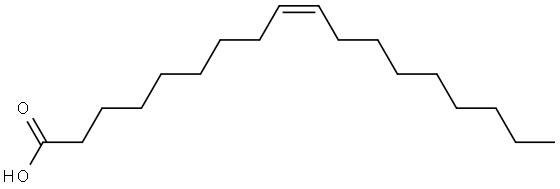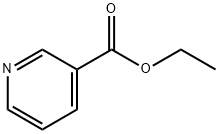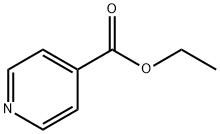Ethyl all cis-5,8,11,14,17-Eicosapentaenoate
- CAS NO.:86227-47-6
- Empirical Formula: C22H34O2
- Molecular Weight: 330.5
- MDL number: MFCD00673476
- SAFETY DATA SHEET (SDS)
- Update Date: 2024-11-19 23:02:33

What is Ethyl all cis-5,8,11,14,17-Eicosapentaenoate?
Absorption
Icosapent ethyl is de-esterfied, converted into active EPA, and then absorbed in the small intestine. It reaches peak plasma concentration in 5 hours post-oral administration. Very little (<1%) is left circulating in the plasma as EPA incorporates into phospholipids, TG's, and cholesteryl esters.
Toxicity
Icosapent ethyl is generally well tolerated and adverse effects are unrelated to treatment.
Description
Ethyl icosapentate is an ester of a polyunsaturated acid derived from fish oil. It is reported to decrease platelet aggregation, reduce blood viscosity and increase erythrocyte deformability.
Chemical properties
Clear Colourless Oil
Originator
Nippon Suisan (Japan)
The Uses of Ethyl all cis-5,8,11,14,17-Eicosapentaenoate
Important polyunsaturated fatty acid of the marine food chain that serves as a precursor for the prostaglandin-3 and thromboxane-3 families. It differs from arachidonic acid (the eicosatetraenoic acid that is a precursor for the prostaglandin and thromboxane-2 families) by the extra double bond between the third and fourth carbons from the “methyl end” of the molecule. Antilipemic.
The Uses of Ethyl all cis-5,8,11,14,17-Eicosapentaenoate
hypolipidemic
The Uses of Ethyl all cis-5,8,11,14,17-Eicosapentaenoate
Eicosapentaenoic Acid Ethyl Ester is an important polyunsaturated fatty acid of the marine food chain that serves as a precursor for the prostaglandin-3 and thromboxane-3 families. It differs from arachidonic acid (the eicosatetraenoic acid that is a precursor for the prostaglandin and thromboxane-2 families) by the extra double bond between the third and fourth carbons from the “methyl end” of the molecule. Antilipemic.
Indications
Icosapent ethyl is indicated as an adjunct to maximally tolerated statin therapy to reduce the risk of myocardial infarction, stroke, coronary revascularization, and unstable angina requiring hospitalizing in adult patients with elevated triglycerides (≥150 mg/dL) and established cardiovascular disease or who have diabetes mellitus and ≥2 other risk factors for cardiovascular disease. It is also indicated as an adjunct to diet to reduce triglyceride levels in adult patients with severe (≥500 mg/dL) hypertriglyceridemia.
Background
Icosapent ethyl or ethyl eicosapentaenoic acid is a synthetic derivative of the omega-3 fatty acid eicosapentaenoic acid (EPA). It is used as an adjunct therapy for severe hypertriglyceridemia (TG levels > 500 mg/dL) and to reduce the risk of cardiovascular events in certain patients with elevated triglycerides. FDA approved on July 26, 2012.
Definition
ChEBI: A long-chain fatty acid ethyl ester resulting from the formal condensation of the carboxy group of (5Z,8Z,11Z,14Z,17Z)-icosapentaenoic acid with the hydroxy group of ethan l.
brand name
Omacor (Reliant).
brand name
Epadel
Metabolism
Once converted into active EPA, it is hepatically metabolized into acetyl Coenzyme A via beta-oxidation.
Properties of Ethyl all cis-5,8,11,14,17-Eicosapentaenoate
| Boiling point: | 417.0±34.0 °C(Predicted) |
| Density | 0,91 g/cm3 |
| refractive index | 1.4850 to 1.4890 |
| storage temp. | Keep in dark place,Inert atmosphere,2-8°C |
| Water Solubility | Insoluble in water |
| solubility | DMF:100.0(Max Conc. mg/mL);302.56(Max Conc. mM) DMSO:66.67(Max Conc. mg/mL);201.7(Max Conc. mM) Ethanol:75.0(Max Conc. mg/mL);226.92(Max Conc. mM) PBS (pH 7.2):0.15(Max Conc. mg/mL);0.45(Max Conc. mM) |
| form | Liquid |
| form | neat |
| color | Colorless to Almost colorless |
| CAS DataBase Reference | 86227-47-6 |
Safety information for Ethyl all cis-5,8,11,14,17-Eicosapentaenoate
| Signal word | Warning |
| Pictogram(s) |
 Exclamation Mark Irritant GHS07 |
| GHS Hazard Statements |
H315:Skin corrosion/irritation H319:Serious eye damage/eye irritation H335:Specific target organ toxicity, single exposure;Respiratory tract irritation |
| Precautionary Statement Codes |
P261:Avoid breathing dust/fume/gas/mist/vapours/spray. P280:Wear protective gloves/protective clothing/eye protection/face protection. |
Computed Descriptors for Ethyl all cis-5,8,11,14,17-Eicosapentaenoate
| InChIKey | SSQPWTVBQMWLSZ-AAQCHOMXSA-N |
| SMILES | C(OCC)(=O)CCC/C=C\C/C=C\C/C=C\C/C=C\C/C=C\CC |
Ethyl all cis-5,8,11,14,17-Eicosapentaenoate manufacturer
New Products
Tert-butyl bis(2-chloroethyl)carbamate (S)-3-Aminobutanenitrile hydrochloride N-Boc-D-alaninol N-BOC-D/L-ALANINOL N-octanoyl benzotriazole 3,4-Dibenzyloxybenzaldehyde 4-Hydrazinobenzoic acid 1,1’-CARBONYLDIIMIDAZOLE R-2-BENZYLOXY PROPIONIC ACID 3-NITRO-2-METHYL ANILINE 4-IODO BENZOIC ACID 4-HYDROXY BENZYL ALCOHOL 4-(3-chloropropyl)morpholine phenylhydrazine hydrochloride (2-Hydroxyphenyl)acetonitrile 4-Bromopyrazole 5-BROMO-2CYANO PYRIDINE 5,6-Dimethoxyindanone 5-broMo-2-chloro-N-cyclopentylpyriMidin-4-aMine 4-methoxy-3,5-dinitropyridine 2-(Cyanocyclohexyl)acetic acid 2-aminopropyl benzoate hydrochloride 1-(4-(aminomethyl)benzyl)urea hydrochloride tert-butyl 4- (ureidomethyl)benzylcarbamateRelated products of tetrahydrofuran








You may like
-
 Ethyl all cis-5,8,11,14,17-Eicosapentaenoate CAS 86227-47-6View Details
Ethyl all cis-5,8,11,14,17-Eicosapentaenoate CAS 86227-47-6View Details
86227-47-6 -
 Ethyl all cis-5,8,11,14,17-Eicosapentaenoate (stabilized with Tocopherols) CAS 86227-47-6View Details
Ethyl all cis-5,8,11,14,17-Eicosapentaenoate (stabilized with Tocopherols) CAS 86227-47-6View Details
86227-47-6 -
 Eicosapentaenoic acid ethyl ester CAS 86227-47-6View Details
Eicosapentaenoic acid ethyl ester CAS 86227-47-6View Details
86227-47-6 -
 (9H-fluoren-9-yl)methyl (2,5-dioxopyrrolidin-1-yl) carbonate 82911-69-1 98.0%View Details
(9H-fluoren-9-yl)methyl (2,5-dioxopyrrolidin-1-yl) carbonate 82911-69-1 98.0%View Details
82911-69-1 -
 13057-17-5 95.0%View Details
13057-17-5 95.0%View Details
13057-17-5 -
 4-bromoaniline 106-40-1 99.0%View Details
4-bromoaniline 106-40-1 99.0%View Details
106-40-1 -
 5-bromo-2-chlorobenzoic acid 99.0%View Details
5-bromo-2-chlorobenzoic acid 99.0%View Details
21739-92-4 -
 15761-38-3 97.0%View Details
15761-38-3 97.0%View Details
15761-38-3